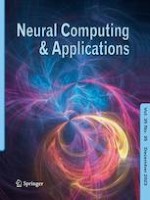14.12.2022 | S.I.: Applications and Techniques in Cyber Intelligence (ATCI2022)
Dual dimensionality reduction on instance-level and feature-level for multi-label data
Erschienen in: Neural Computing and Applications | Ausgabe 35/2023
EinloggenAktivieren Sie unsere intelligente Suche, um passende Fachinhalte oder Patente zu finden.
Wählen Sie Textabschnitte aus um mit Künstlicher Intelligenz passenden Patente zu finden. powered by
Markieren Sie Textabschnitte, um KI-gestützt weitere passende Inhalte zu finden. powered by
